Anykščiai is the Lithuanian name for ОНИКШТЫ [ONIKSHTY] in the government КОВНО [KOVNO] (in Lithuanian Kaunas). The Russian name is very much like the German indication Onikschten, or the Polish name, Onykszty.
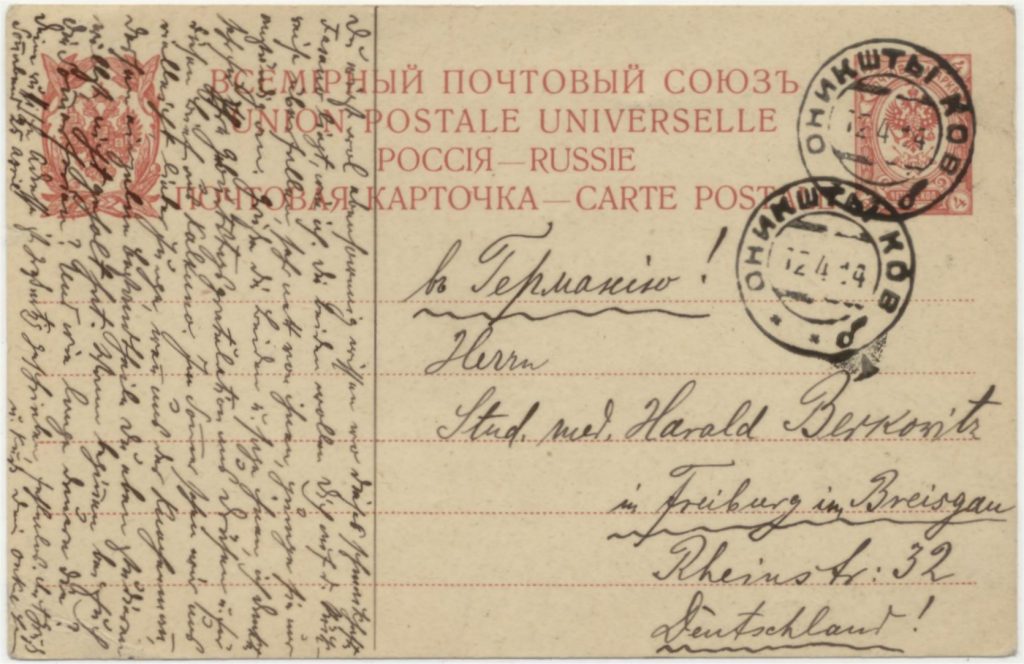
Due to the bad financial situation and the devaluating of the Rubel, 8 March 1889 new rates were introduced for mail abroad (in the Asiatic parts of Russia 1 April 1889):
Postcards abroad 4 k
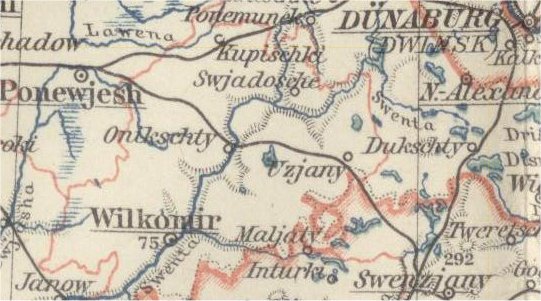
On this map Anykščiai, here Onikschty, is located on the railway line between Panevėžys (here Ponewjesh) and Švenčionys (here Swenzjany, in the government Wilna/Vilnius).
D|naburg (Dwinsk) on this map is now the Latvian place Daugavpils.
The place Uzjany on this map is now the Lithuanian Utena and Wilkomir is the Lithuanian Ukmergė.
The arrival postmark of ВИЛКМИРЪ (Vilkomir) you see on the next cover here below.
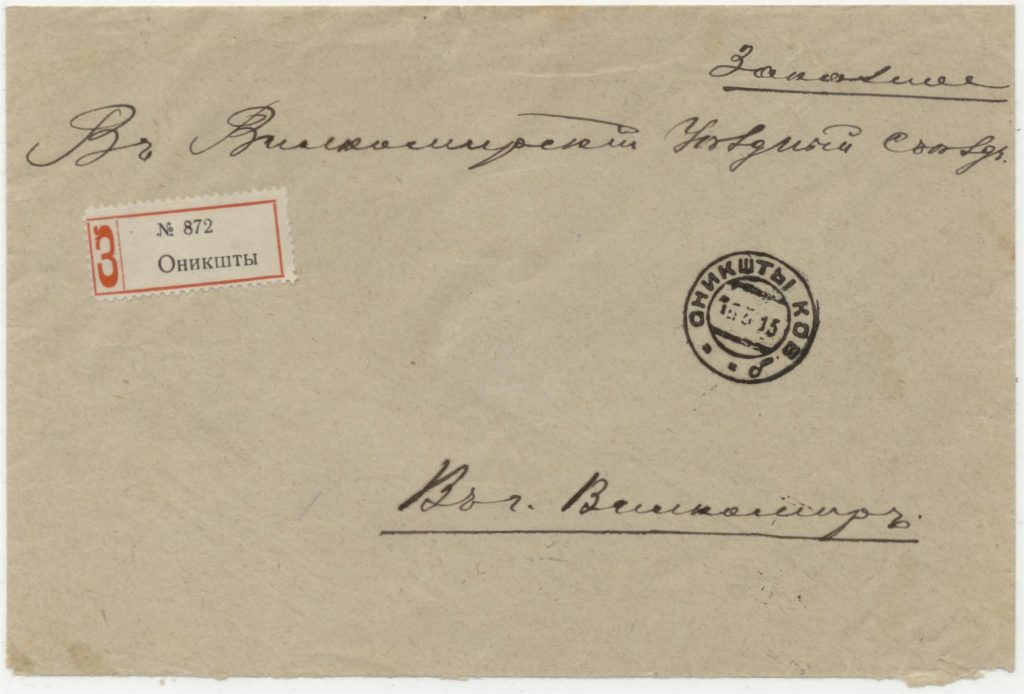

Many times are -as here- used the ‘written’ letters in the postmarks. On this picture the first 7 ‘written’ letters.
We see again the Russian postmark of ОНИКШТЫ [ONIKSHTY], with the same serial letter.
In the double-circle postmarks were used serial letters, but in the order of the cyrillic alphabet:
1th letter = А [A] 2th letter = Б [B]
3th letter = В [V or W] 4th letter = Г [G]
5th letter = Д [D] 6th letter = Е [E]
7th letter = Ж [ZH]
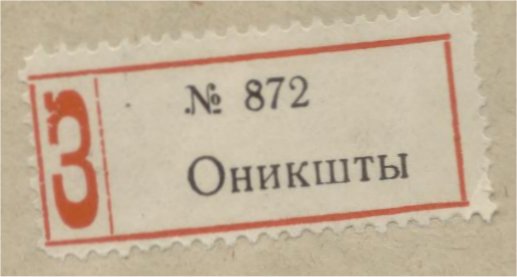
The letter is registered. This you can see of course from the registry label, but also right above on the cover is handwritten: ЗАКАЗНАЯ / ЗАКАЗНОЕ / ЗАК. (ZAKAZNAYA, ZAKAZNOE) ‘registered’.
The first -reported- registration label in Russia is used 3 January 1899 and almost all are in Cyrillic script. Later, from 1900, for internal mail are used labels with Cyrillic З, short for ЗАКАЗНАЯ. For mail going abroad are used labels with the latin R, short for the French indication Recommandée. Only in Moscow this kind of labels with R were already used in 1899.
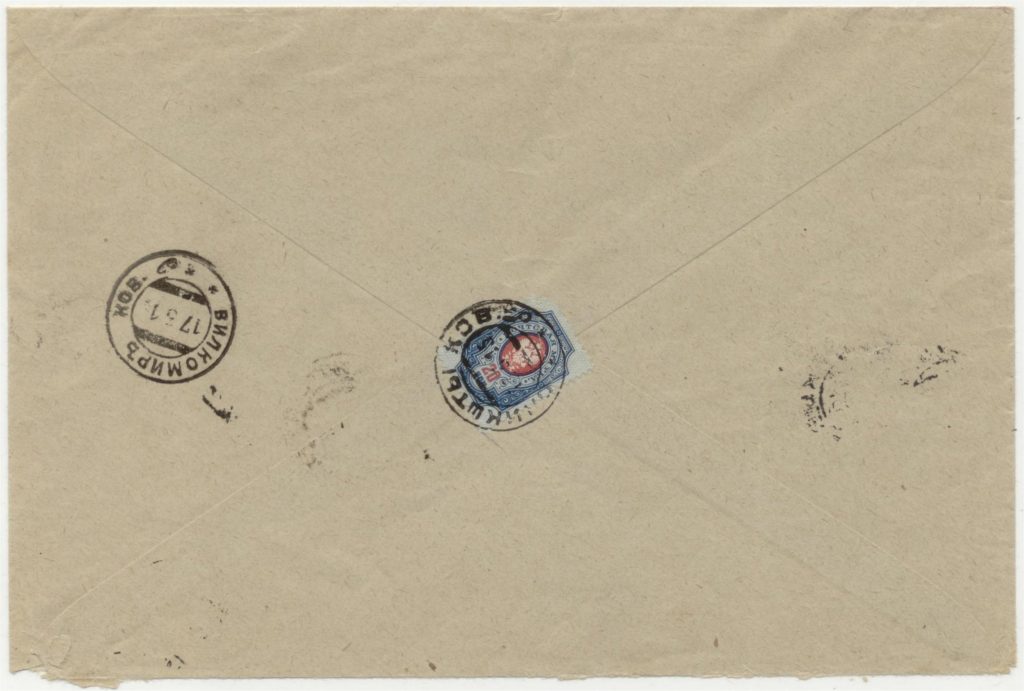
The stamp: 20 kop. This letter is sent 15-5-1915 (arrival 17-5-1915. In 1914, 21 September, due to World War I the rates were put up:
Letters inland 10 k. per 15 gramme and register 10 k. So this registered letter, together: 20 kop. (In 1917, 15 August the rates were again up).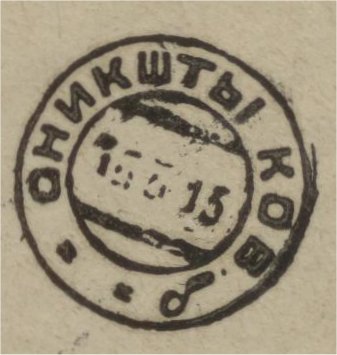
- Type 7A: with gubernia indicated
- Type 7B: without gubernia
For the later double circle postmarks is for ОНИКШТЫ [ONIKSHTY] only reported is this postmark with serial letter b, the 2th letter of the cyrillic alphabet.
Probably there are postmarks of this type with the first serial letter a. The subtype: 7A1: * * a etc..
In ’the handbook’ – Paš Antspaudai = Poststempel in Litauen = P.O. Cancels in Lithuania / V. Fugalevič. – second ed. 1990: an illustration -not complete(?)- of a double circle postmark, something bigger.
The first reported postmark of ОНИКШТЫ [ONIKSHTY], the Lithuanian Anykščiai, is one-circle postmark with date in three lines. In the classification of the EESTI-Handbook type 6A: gubernia at top and the type post office below, date in three lines, month in letters (type 6A). The type post office is below in this postmark: ПОЧТ. ТЕЛЕГР. , the abbrevation for ПОЧТОВО-ТЕЛЕГРАФНАЯ (POCHTOVO-TELEGRAFNAYA Post-Telegraph)
and with the addition ОТД [OTD], short for ОТДЬЛЕНЕ [OTDLENIE], branch, a sub-postoffice.
In june 1884 the postal and telegraph departments were united. In the beginning of the telegraph (since 1866) there were scarcely connections between the post and telegraph, but it was too expensive to let it separated.
From june 1884 there were also two new types of offices: the Post-telegraph Office (Pochtovo-Telegrafnaya Kontora), as we have seen, for a greater city as Vilnius was, and a Post-Telegrapyh Sub-Office (Pochtovo-Telegrafnoe Otdelenie) as ОНИКШТЫ [ONIKSHTY]. These offices combined both services: post and telegraph.
So, circular postmarks of ОНИКШТЫ [ONIKSHTY], the Lithuanian Anykščiai, according the handbook of Fugalevičius:
- Type 6A: gubernia at top and the type post office below, date in three lines, month in letters, serialnumber 1
- For ОНИКШТЫ [ONIKSHTY] is also reported a ‘cross-date’-postmark, with serialnumber 1 (type 6C according EESTI).
- the double-ring postmarks, large -incomplete- and a small with serial letter b, type 7A1